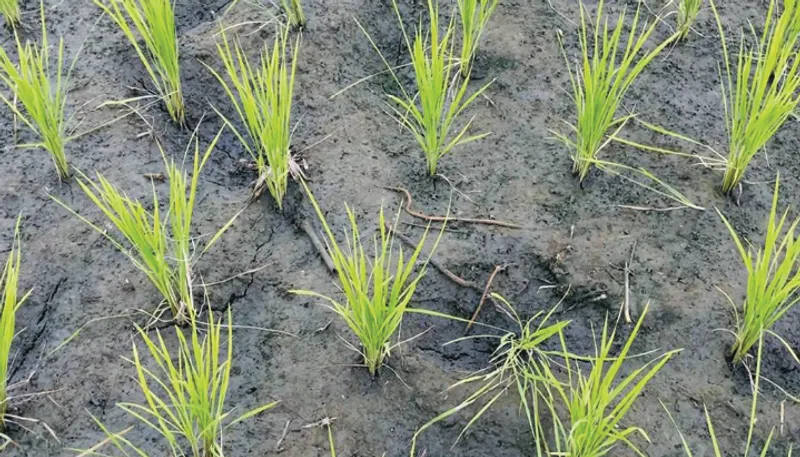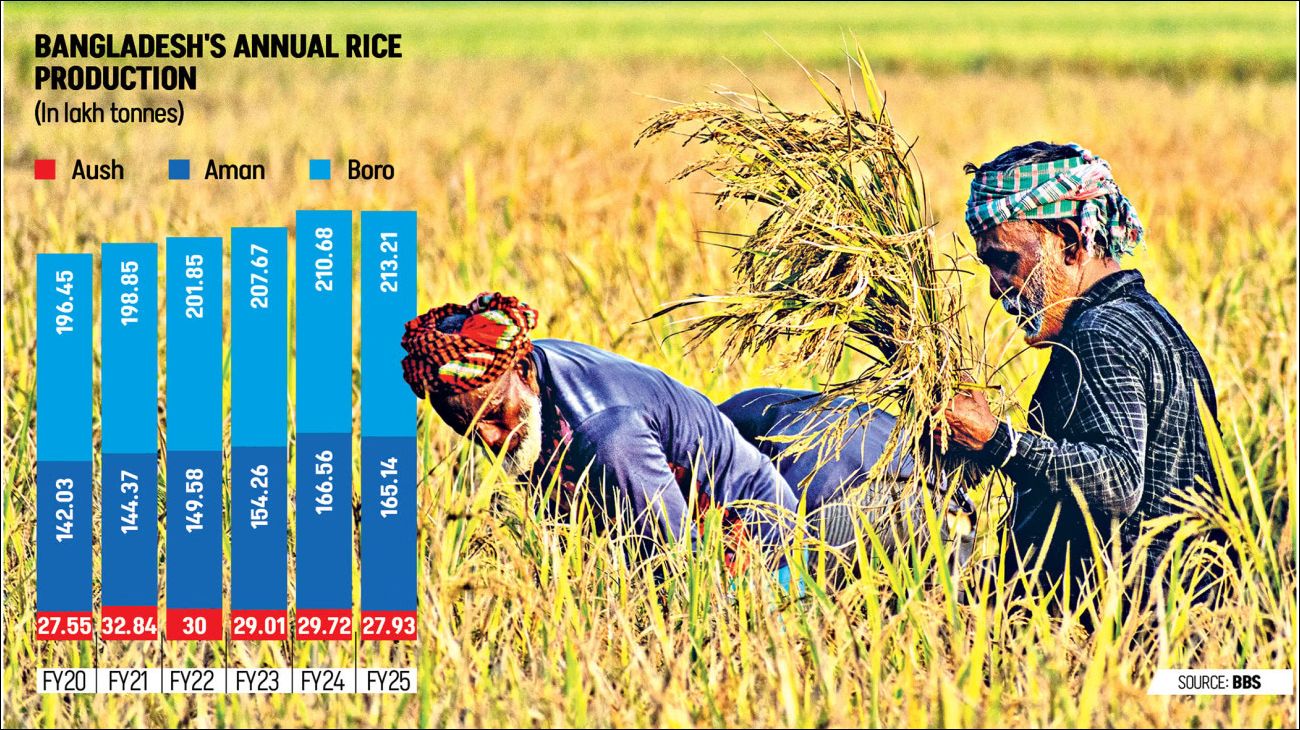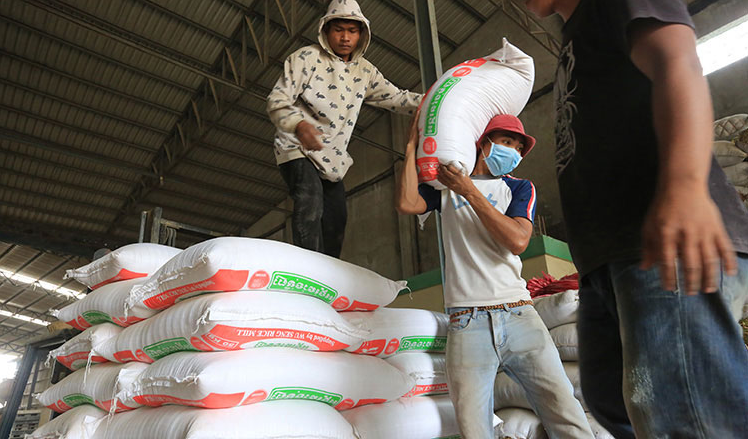Tags
Kashmir’s rice bowl cracks
Agriculture experts warn of a looming food crisis and are urging a shift to water-efficient techniques such as the System of Rice Intensification (SRI) to mitigate losses.

Khalid Gul
Srinagar, Jun 30: Farmers across Kashmir are watching their paddy fields wither as irrigation canals run dry amid alarmingly low water levels in the Jhelum River and its tributaries.
Agriculture experts warn of a looming food crisis and are urging a shift to water-efficient techniques such as the System of Rice Intensification (SRI) to mitigate losses.
vGhulam Hassan, 65, a farmer in Arwani village of south Kashmirís Anantnag district, part of the regionís traditional rice belt, has cultivated paddy on his familyís eight hectares for decades.
However, this year, his land has cracked open under a relentless dry spell.
ìThis is peak paddy season, but many fields havenít received a drop of water,î Hassan said, pointing to a parched patch. ìIíve already lost half my crop. If thereís no rain or irrigation soon, we wonít survive the year.î
The once-fertile rice belt, spread across Kulgam and parts of Anantnag, is suffering as key irrigation sources such as the Nandi canal, fed by the Vaishaw stream, run dry.
Farmers blame rampant illegal mining in the riverbeds of tributaries like the Vaishaw for altering water flow and reducing discharge.
ìThis illegal extraction of sand, soil, and boulders with heavy machinery has made it impossible for water to reach even the canal heads,î Hassan said.
He said that a lack of desilting, pollution, reduced carrying capacity of canals, and encroachments have compounded the problem.
Rice Research Centre of Sher-e-Kashmir University of Agricultural Sciences and Technology, Kashmir (SKUAST-K) is also located in Khudwani village of Qaimoh, part of Kashmirís rice bowl, with prominent scientists engaged in agricultural research.
Conditions are especially dire in tail-end villages such as Yaripora, Frisal, Kujar, Redwani, Tachloo, Sherpora, Arwani, Hassanpora, Hussanpora, Tulkhun, Subhanpora, Pazalpora, Jablipora, Shoal, Shamsipora, Batengoo, Uranhall, Semthan, and Sangam, where farmlands are turning brown instead of green.
Hamid Ahmad, a farmer from Redwani village of Kulgam, said even lift irrigation schemes have failed.
ìDrought pumps havenít been deployed either. Itís alarming,î he said.
Some farmers, like Rouf Ahmad in Dehruna, Kokernag, have already switched to alternative crops.
ìOur paddy fields are beyond saving. Weíve started planting maize, millets and pulses to sustain ourselves,î Ahmad said. ìEarly advisories on drought-resistant crops could have helped.î
The irrigation crisis is affecting not just Kulgam and Anantnag but also parts of Pulwama and central and north Kashmir.
Lawmakers, including Syed Bashir Ahmad Veeri and Waheed-ur-Rehman Para, along with PDP leader Iltija Mufti, have raised concerns over the deteriorating situation.
ìMassive rejuvenation and realignment of works for most of the irrigation canals are urgently needed. The majority of lift irrigation scheme sumps require re-designing as riverbed depths have increased due to unscientific mining or augmentation with drought pumps to counter,î Veeri posted on microblogging site X.
Para alleged that most of the lift irrigation schemes, particularly in south Kashmir, were lying defunct.
ìJ&K sinks into a worsening water crisis as farmers watch their crops dry up,î he said.
Experts attribute the shortage to climate anomalies, including early glacial melt and a more than 50 percent deficit in seasonal rainfall.
Peer Manzoor, a senior official in the Irrigation Department, said water levels in the Jhelum River are critically low.
ìAt some points, the river is only 7 inches deep and dropping, except for a brief rise during certain hours,î he said. ìJust five days ago, the depth was 13 inches, and three weeks ago, it was around 20 inches. There is less than 25 percent water in the Jhelum right now.î
He said most of the glacial runoff occurred in March, April, and May, when irrigation demand was low.
ìWe are witnessing a climate-induced agricultural crisis,î said an Agriculture Department official. ìStreams are drying up faster, and rainfall has become erratic. The impact on food security will be serious.î
With Kashmirís reliance on rice imports growing, officials are urging adaptive farming.
Deputy Director Agriculture (Training) Ajaz Ahmad Dar recommended SRI as a mitigation measure.
ìFarmers should irrigate, drain and re-irrigate only when the soil dries. This conserves water and protects the crop,î Dar said.
He said that a contingency plan was in place.
ìWe are coordinating with irrigation authorities and deploying drought pumps in areas where lift irrigation has failed. We are prepared to respond as the situation evolves,î Dar said.
With July underway and no rain in sight, time is running out for Kashmirís rice farmers.
https://www.greaterkashmir.com/front-page-2/kashmirs-rice-bowl-cracks/Published Date: July 2, 2025






